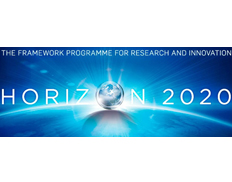Share
Print

Call updates
Jul 7, 2020 11:08:57 AM
An overview of the H2020-SPACE-2020 evaluation results (Flash Call Info) is now available under the section Additional documents.
Mar 6, 2020 2:02:47 PM
Call H2020-SPACE-2020 closed on 5th March 2020.
200 proposals have been submitted.
The breakdown per topic is:
LC-SPACE-18-EO: 23
Evaluation results are expected to be communicated in July 2020.
Nov 05, 2019 11:04:00 AM
The submission session is now available for: LC-SPACE-18-EO-2020(RIA)
Copernicus evolution: Research activities in support of the evolution of the Copernicus services
ID: LC-SPACE-18-EO-2020
Focus area: Building a low-carbon, climate resilient future (LC)
Type of action:
RIA Research and Innovation action
Deadline Model : single-stage
Planned opening date: 05 November 2019
Deadline: 05 March 2020 17:00:00 Brussels time
Copernicus operational services are not static, but need to evolve with recognised and emerging user requirements and EU policies.
R&D activities which are suitable for this call are identified to this end by the Commission, together with the Entrusted Entities, for each service. The challenge is to clearly demonstrate if and under which conditions an evolution of the operational service portfolio is appropriate and in line with the Copernicus Programme.
Scope:The proposal should tackle only one of the following sub-topics. For the chosen sub-topic the proposal should clearly identify one (or more) core product(s) to be developed as a completely new or improved product.
The Commission, together with the Entrusted Entities, has identified for each service (sub-topic) the areas of Copernicus R&D interests:
Actions should take into account the existing portfolio of the services and clearly define to what extent main model, algorithm, tool and technique should be improved to generate new or better products.
Actions aim at demonstrating the technical operational feasibility of the selected product(s).
The proposed development should be modular and scalable. The project should provide a proof-of-concept or a prototype (e.g. system element) demonstrating the feasibility of the integration in the existing core service. This new “system element” should also guarantee the expandability required for the integration of new data from potential space or no-space new mission/sensors.
During the development of the project, the team taking into account the delineation between Copernicus core services and downstream services, should clearly identify the right context of the proposed product(s). The border delineation takes into account the principles of subsidiarity and proportionality, the avoidance of duplication, and the facilitation of user uptake.
The proposal should also investigate to what extent the proposed evolution could be a candidate for the operational Copernicus service in terms of cost-benefits, calendar and operational feasibility.
R&D activities should aim at a better integration of space research with other non-space domains (e.g citizen science including social media) focusing in particular on policy areas addressing global and societal challenges highlighting horizontal synergies and multidisciplinary approaches. In particular, proposals should clearly mention which of the UN Sustainable Development Goals the project will support.
New IT tools should be considered and innovative solutions should be proposed for a better data exploitation, processing and distribution, e.g.: cloud and HPC computing, distributed computing, Artificial Intelligence, machine learning (e.g. for automatic feature recognition), ensemble modelling, model coupling & nesting, software as-a-service.
Additionally, the operationalisation of the research results should receive active attention during the course of the project to strengthen the readiness for an operational deployment in the future, including the conditions for making available, for re-use and exploit the results (including IPR) to the entities implementing the EU Copernicus programme. The software should be open licensed in order to use, copy, study, and change it in any way.
Proposers are advised to consult information on the Copernicus programme in general at https://www.copernicus.eu/en, the availability of Copernicus Sentinel Data, access to Copernicus Contributing Mission data at the Commission’s website (https://www.copernicus.eu/en/access-data).
It should be noted that funding of the H2020 project in no way commits the Commission or the Copernicus service operators to deploy the outcomes from the research in the Copernicus operational services.
For proposals under this topic:
At least one proposal per sub-topic shall be selected for funding.
The Commission considers that proposals requesting a contribution from the EU of between EUR 1 and 1.5 million would allow this specific challenge to be addressed appropriately. Nonetheless, this does not preclude submission and selection of proposals requesting other amounts.
Expected Impact:Blue Growth
